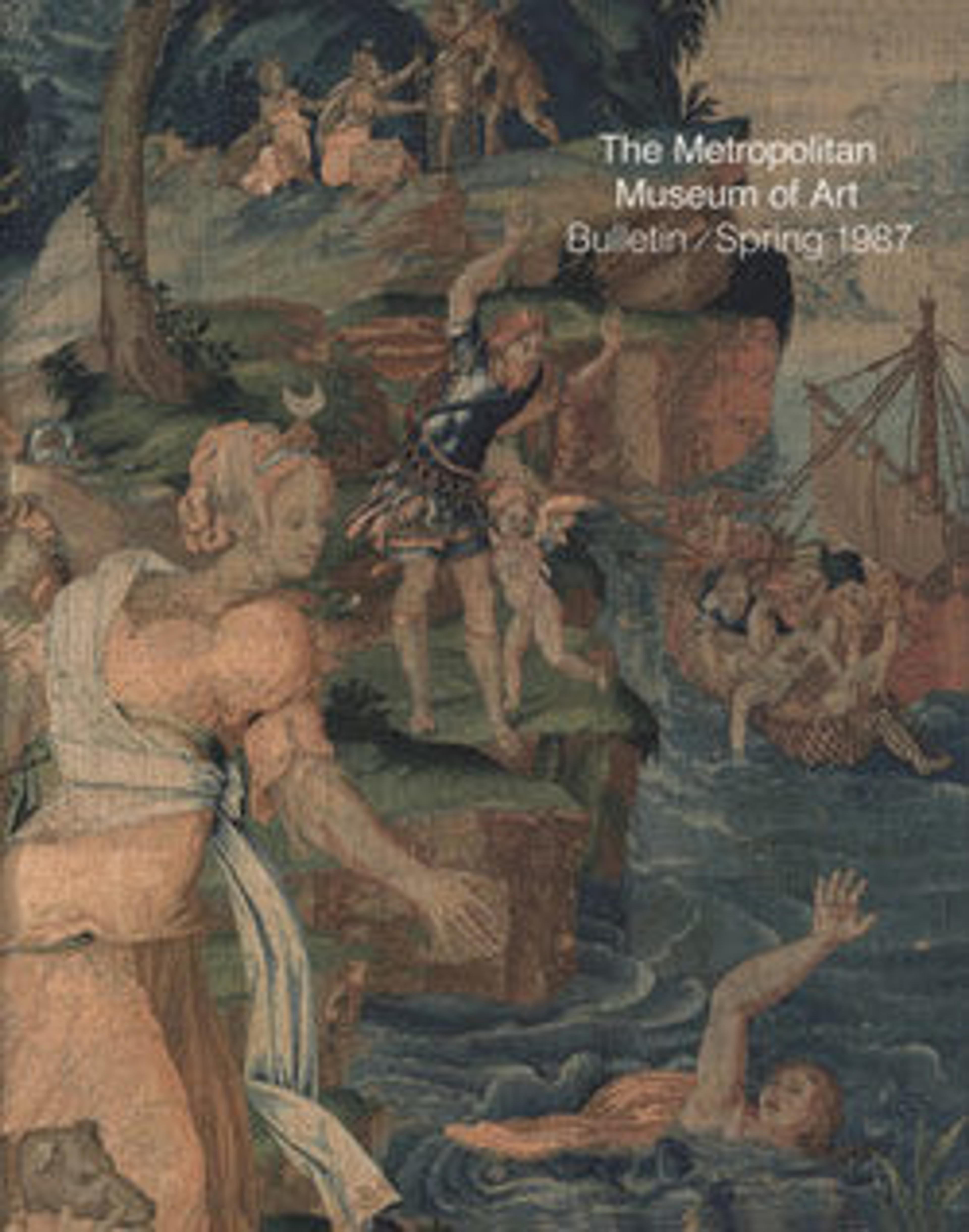The Meeting of Antony and Cleopatra from a set of The Story of Antony and Cleopatra
This panel depicts the moment at which Antony first sees Cleopatra, who is riding in the stern of a barge, fanned by youths dressed as cupids (as described by Plutarch). Cupid, leaning against the sail of the barge, aims an arrow at Antony, who is riding a spirited horse. The Latin inscription in the upper cartouche reads "Antony, sent to compel her, is captured by love of her." The exuberant style is typical of the tapestry designs of Justus van Egmont, who blended the dramatic figures of Rubens with a relish for billowing draperies and decorative details. Although the date of conception is unknown, sets of this design were being produced in Brussels from the early 1650s, and it evidently enjoyed considerable popularity. Several partial sets have survived, some numbering more than ten pieces.
Artwork Details
- Title:The Meeting of Antony and Cleopatra from a set of The Story of Antony and Cleopatra
- Designer:Designed by Justus van Egmont (Flemish, Leiden 1601–1674 Antwerp)
- Maker:Weaving workshop directed by Geraert van der Strecken (Brussels, active 1647, died 1677)
- Date:designed ca. 1650, woven 1650–77
- Culture:Flemish, Brussels
- Medium:Wool, silk, silver and silver-gilt thread (20-22 warps per inch, 8-9 per cm.)
- Dimensions:H. 163 x W. 204 inches (414 x 518.2 cm)
- Classification:Textiles-Tapestries
- Credit Line:Bequest of Elizabeth U. Coles, in memory of her son, William F. Coles, 1892
- Object Number:92.1.9
- Curatorial Department: European Sculpture and Decorative Arts
More Artwork
Research Resources
The Met provides unparalleled resources for research and welcomes an international community of students and scholars. The Met's Open Access API is where creators and researchers can connect to the The Met collection. Open Access data and public domain images are available for unrestricted commercial and noncommercial use without permission or fee.
To request images under copyright and other restrictions, please use this Image Request form.
Feedback
We continue to research and examine historical and cultural context for objects in The Met collection. If you have comments or questions about this object record, please contact us using the form below. The Museum looks forward to receiving your comments.
